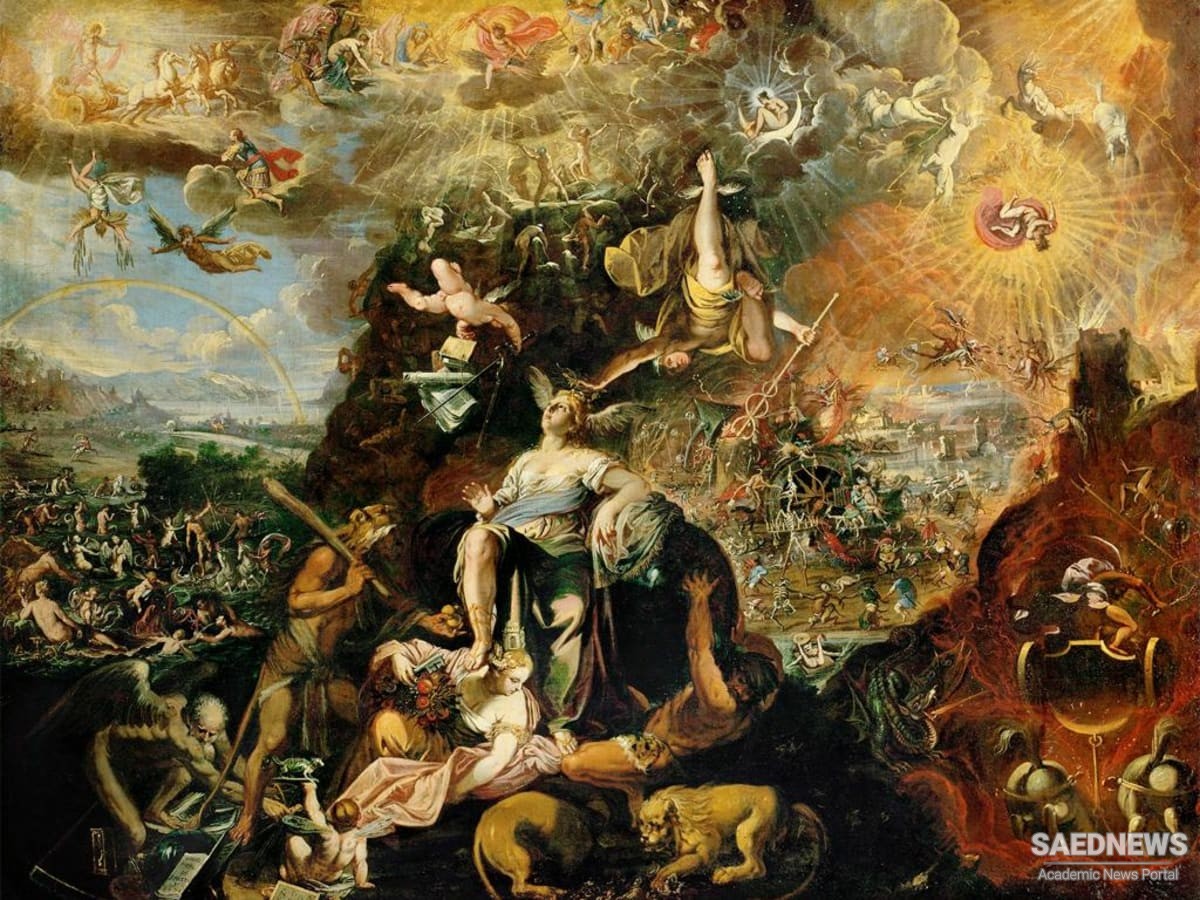A unifying motif in speculative millennialism, and a converging point of the absolute and the relative in this mode of thinking, is the concept of cyclical renovation. Imagining the End, whether a literal or allegorical annihilation of the physical world, necessitates a chaotic jolt to facilitate a new beginning. Millennial currents, except perhaps for the most “pessimistic” and doctrinally inarticulate, subscribe to one form or another of cyclical rebirth so as to place the convulsions of the End in a broader, and humanly more tolerable, scheme. Such apocalyptic deconstruction is not an entirely aimless or nihilistic process. While it often reflects the violent aspirations of the persecuted and the deprived, it also guarantees the continuity of the human race in celestial or terrestrial forms; be it the timeless bliss of an otherworldly paradise or in the post-apocalyptic reality. Such reality adheres to postponed prophecies and anticipations but also may attempt to build an earthly community on the perceived celestial model. Isma'ili messianism offers at least two examples of post-millennial community: the tenth-century Qarmati state of Bahrain and the Nazari Isma'ilism of the Alamut after the declaration of the Resurrection (Qiyamat) in 1164. The Babi movement in Iran after the conference of Badasht in 1848, which declared the end of the Islamic dispensation, may also be viewed as post-millennial; a spirit that in many ways continued to shape the zeitgeist of the Baha'i Faith during Baha'ullah’s time. Of post-millennial trends in Judaism one example is the Sabbatean Donmeh, the crypto-Jewish followers of Sabbatai Zevi of the seventeenth century. Among several Christian examples in recent times we may note the emergence of the Seventh Day Adventists after the collapse of the Millerite movement in 1844.


 Shia Islam, Apocalypticism and Advent of a New Era of Justice and Freedom
Shia Islam, Apocalypticism and Advent of a New Era of Justice and Freedom














































